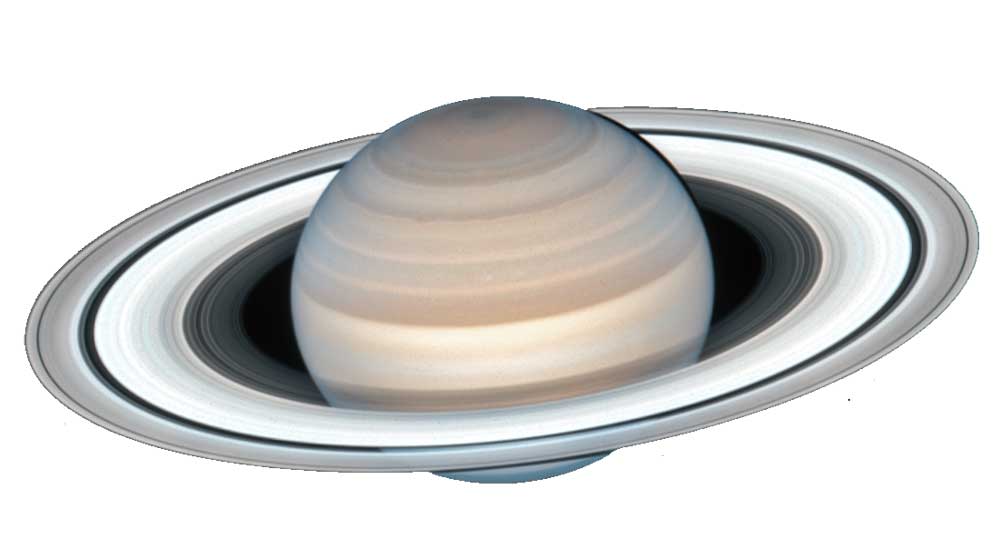There’s something about Saturn that just captivates people. Maybe it’s the rings, or perhaps it’s the unique atmosphere. No matter what it is, Saturn has always been a popular topic for exploration. In this article, we will take a look at some of the most interesting facts about this fascinating planet!

Discovery of Saturn
Saturn was first observed by the ancients through telescopes. Galileo Galilei was the first to observe Saturn with a telescope in 1609, but he was not able to identify it as a planet because of its strange appearance. In 1655, Christiaan Huygens correctly identified Saturn as a planet and discovered its largest moon, Titan. Huygens also correctly identified the rings of Saturn, but he believed that they were solid and attached to the planet.
Naming of Saturn
The naming of Saturn is thought to have originated with the Romans, who named the planet after their god of agriculture. The name Saturn is thought to have come from the Etruscan form of the Roman god’s name, Satre.
Diameter & Mass
Saturn is the sixth planet from the Sun and the second largest in the Solar System, after Jupiter. It is a gas giant with an average radius about nine times that of Earth. Although it has only one-eighth the average density of Earth, but with its larger volume Saturn is just over 95 times more massive. The diameter of Saturn is almost 120,000 kilometers, and it has a mass of almost five times that of Earth.
Composition
The composition of Saturn’s atmosphere is also very interesting, consisting of hydrogen, helium, and methane. The unique combination of these gases gives Saturn its distinct yellowish-orange color. The interior of Saturn is very unique, consisting of a rocky core surrounded by a layer of liquid hydrogen and helium.
Climate
The climate on Saturn is also quite interesting, with large storm systems that can last for months or even years! The most famous of these is the Great White Spot, which was first observed in 1876. The temperature on Saturn can range from -178 degrees Celsius at the poles to almost 20 degrees at the equator.
Orbit
Saturn’s orbit is also quite fascinating, as it is tilted almost 30 degrees from the plane of the ecliptic (the plane of Earth’s orbit around the sun). This means that Saturn experiences some very unique seasons!
Saturn planet moons
Saturn has 83 known moons. Some of them are very interesting, including Titan (the largest moon in our solar system) and Enceladus (which is thought to have a liquid water ocean beneath its icy surface).
Titan is the largest of Saturn’s moons and is the only moon in the solar system with a significant atmosphere. It was discovered in 1655 by Christiaan Huygens, and is named after the Titans of Greek mythology. Titan is an important target for planetary science due to its potential for habitability and its similarities to early Earth. The other moons are Iapetus, Rhea, Dione, atlas, Pandora, Prometheus, Tethys, etc.
Planetary rings of Saturn planet
Most people know Saturn for its rings, and they are truly a sight to behold. These rings are made up of small particles of ice and rock, and they range in size from tiny grains to massive chunks. The rings themselves are very thin, with some estimates putting their thickness at less than a meter.
The rings were first discovered in 1655 by the astronomer Giovanni Domenico Cassini. He observed them with a primitive telescope, and they were initially thought to be two separate objects orbiting Saturn. It wasn’t until 1859 that it was realized that these were indeed rings.
The rings are divided into several different parts, with the most notable being the A ring, the B ring, and the C ring. The A ring is the outermost ring, and it is also the brightest and most visible. The B ring is located just inside the A ring, and it is darker and less visible. Finally, the C ring is located closest to Saturn’s surface, and it is generally considered to be the faintest and least visible of the three rings. There are also several smaller and less well-known rings, including the D ring, the E ring, and the F ring.
In addition to these main rings, there are also numerous smaller rings known as “ringlets.” These are generally much thinner and fainter than the main rings, and they are often difficult to observe.
While we have learned a great deal about them in recent years, there is still much that we do not understand about these enigmatic structures.
One of the most intriguing aspects of Saturn’s rings is their dynamics. The structure of the rings is constantly changing, with new features appearing and disappearing over time.
Observation & Voyager visit
People have been observing Saturn for centuries, with the first recorded observation being made by the Babylonians in around the 16th century BCE. However, it wasn’t until the invention of the telescope that we were able to get a closer look at this fascinating planet.
Pioneer 11 was the first spacecraft to visit Saturn, flyby in 1979. It took some amazing photographs of the planet and its rings. Voyager flybys in 1980 and 1981 gave us even more information about Saturn and its moons.
The Cassini–Huygens spacecraft was launched in 1997 and arrived at Saturn in 2004. It has been studying the planet, its rings, and its moons ever since. In 2017, it will make a controlled dive into Saturn’s atmosphere, where it will burn up and become part of the planet itself.
Conclusion| Facts about Saturn Planet
Saturn is a beautiful planet and there is still so much to learn about it. It’s definitely worth keeping an eye on! Who knows what we’ll discover next about this fascinating world. Thank you for taking the time to learn about this fascinating planet!